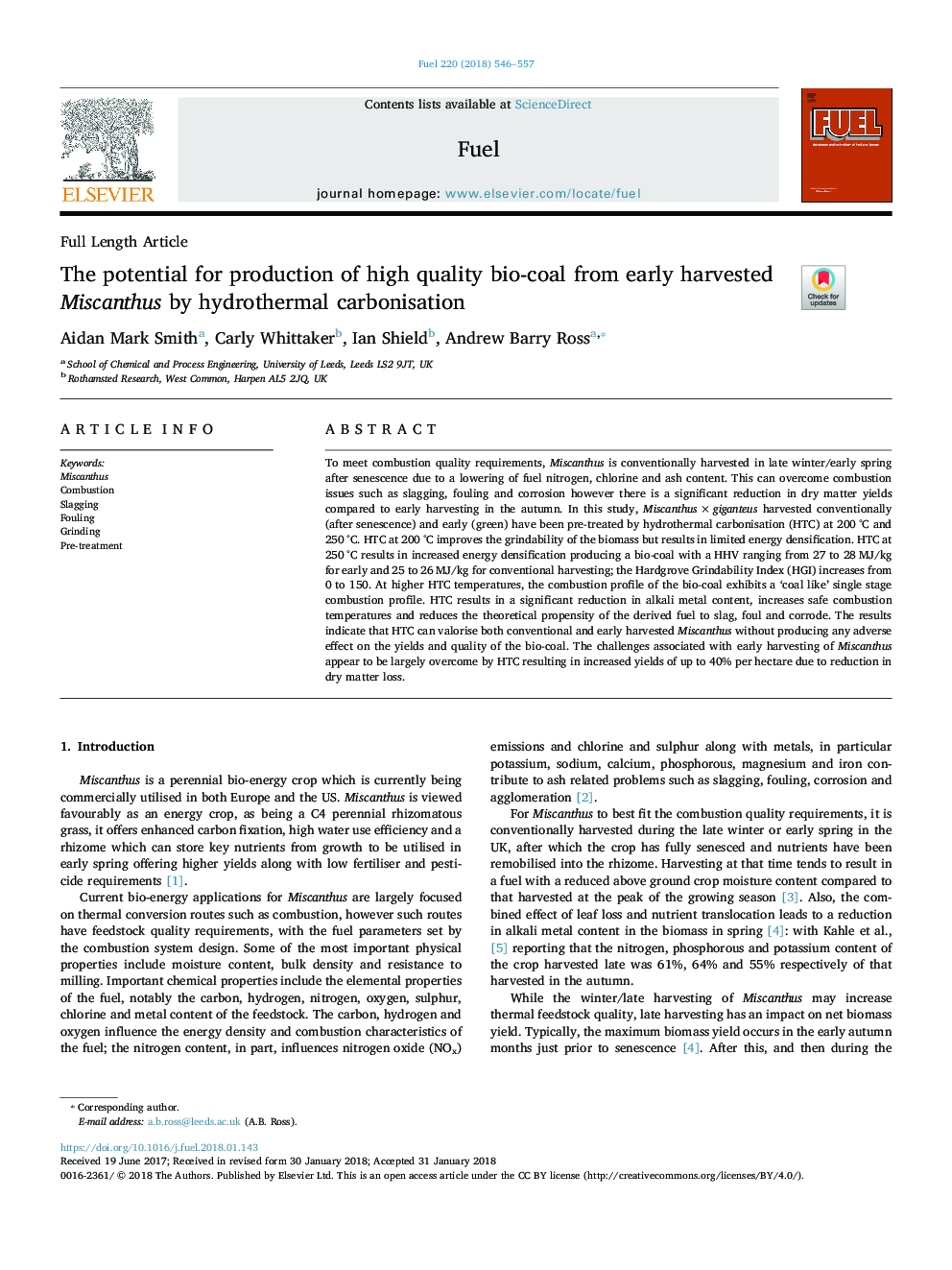| Article ID | Journal | Published Year | Pages | File Type |
|---|---|---|---|---|
| 6631708 | Fuel | 2018 | 12 Pages |
Abstract
To meet combustion quality requirements, Miscanthus is conventionally harvested in late winter/early spring after senescence due to a lowering of fuel nitrogen, chlorine and ash content. This can overcome combustion issues such as slagging, fouling and corrosion however there is a significant reduction in dry matter yields compared to early harvesting in the autumn. In this study, Miscanthusâ¯Ãâ¯giganteus harvested conventionally (after senescence) and early (green) have been pre-treated by hydrothermal carbonisation (HTC) at 200â¯Â°C and 250â¯Â°C. HTC at 200â¯Â°C improves the grindability of the biomass but results in limited energy densification. HTC at 250â¯Â°C results in increased energy densification producing a bio-coal with a HHV ranging from 27 to 28â¯MJ/kg for early and 25 to 26â¯MJ/kg for conventional harvesting; the Hardgrove Grindability Index (HGI) increases from 0 to 150. At higher HTC temperatures, the combustion profile of the bio-coal exhibits a 'coal like' single stage combustion profile. HTC results in a significant reduction in alkali metal content, increases safe combustion temperatures and reduces the theoretical propensity of the derived fuel to slag, foul and corrode. The results indicate that HTC can valorise both conventional and early harvested Miscanthus without producing any adverse effect on the yields and quality of the bio-coal. The challenges associated with early harvesting of Miscanthus appear to be largely overcome by HTC resulting in increased yields of up to 40% per hectare due to reduction in dry matter loss.
Related Topics
Physical Sciences and Engineering
Chemical Engineering
Chemical Engineering (General)
Authors
Aidan Mark Smith, Carly Whittaker, Ian Shield, Andrew Barry Ross,
